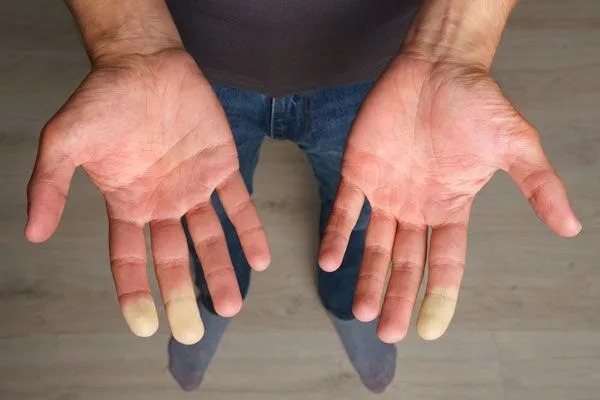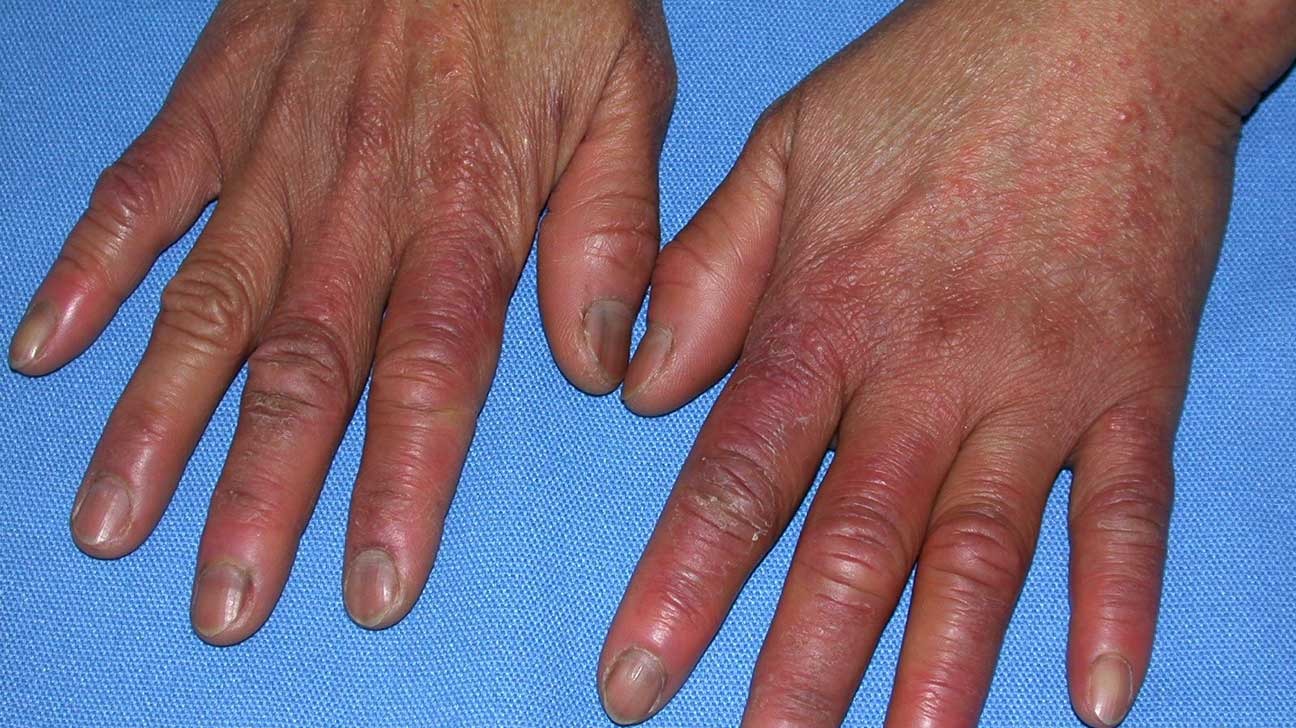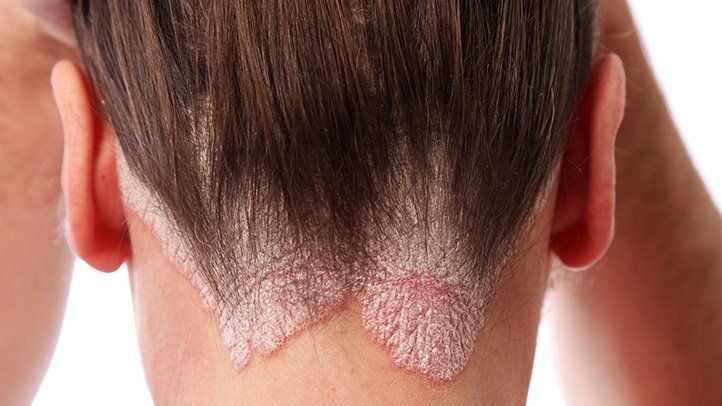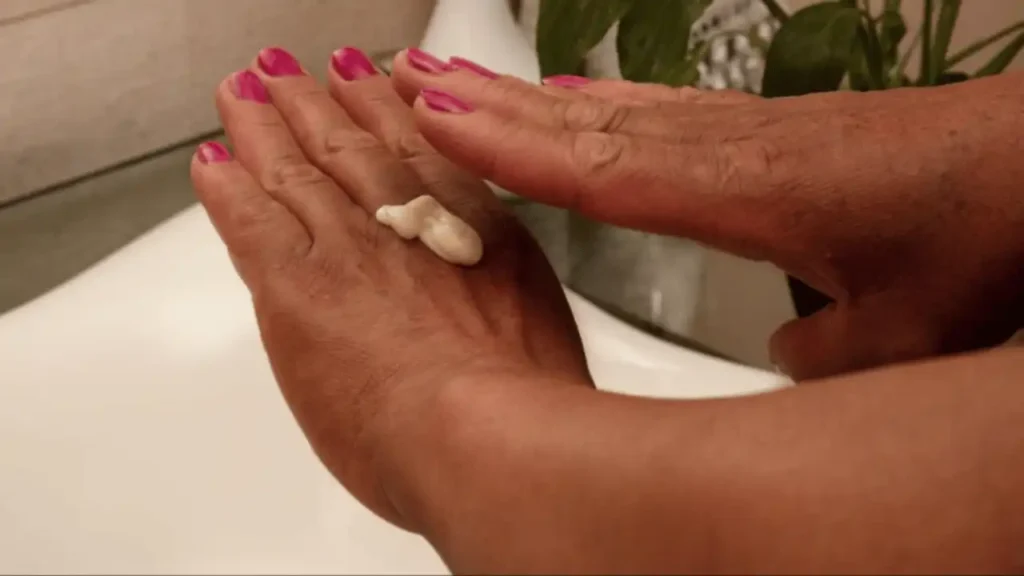For many people who live in areas with seasonal weather changes, the winter months bring a unique challenge to skin health. The drop in colder temperatures, combined with low humidity levels both indoors and outdoors, often causes the skin to become extremely dry, irritated, and dehydrated. This leads to what is commonly called winter rash, a condition that leaves the skin itchy, flaky, and prone to cracked or even bleeding patches. Personally, I’ve noticed how the dry air indoors, worsened by central heating, and the chilly air outside work together to deplete my skin of moisture during these months, making even small lifestyle factors like skipping moisturizer detrimental.
What makes the winter rash even more troublesome is how it’s exacerbated by the constant exposure to cold air and the lack of humidity at home. Dry, flaky skin can be a daily struggle, with common winter skin ailments like xerosis or even eczema adding to the discomfort. The low relative humidity in the air acts like a sponge, wicking moisture away from the skin, while indoor heating further dries it out. I’ve also learned that the skin’s ability to perform essential tasks, like protecting the body from viruses, bacteria, and ultraviolet rays, can become compromised during this time. This leaves us vulnerable not only to reddish patches or lesions but also to deeper issues like eczema severity and winter itch.
Even as someone who used to dislike winter, I’ve found that taking proactive steps to protect my skin’s appearance and health can make all the difference. It’s not just about looking good but about keeping the skin resilient enough to handle the changes in environment. Simple routines like moisturizing regularly and avoiding prolonged exposure to the cold air can help. Healthy skin is more than just a barrier—it’s an important shield for your body, helping you react to pain or pressure while maintaining your overall health during these harsh months.
8 Common Winter Skin Problems and Their Prevention
Acne
Acne occurs when the overproduction of oil leads to the buildup of germs, dead skin cells, and clogged pores. While dry skin might seem unrelated, it can also trigger acne, making it a common issue for many people. Acne can appear anywhere on the body, but it’s most frequent on the face, neck, chest, back, shoulders, and upper arms. Personally, I’ve found that addressing acne effectively often involves using mild cleansers, moisturizers, and, in some cases, doctor-prescribed antibiotics tailored to your skin’s needs.
Eczema

Eczema-affected skin is often itchy, dry, and inflamed, and it frequently occurs on areas like the elbows, knees, hands, and faces. The easiest strategy to treat sensitive skin involves using a fragrance-free moisturizer and limiting baths to just one per day, as excessive exposure to water can make eczema worse by causing it to settle into the skin. Personally, I’ve noticed that keeping a consistent skincare routine focused on hydration can help manage flare-ups effectively.
Chapped Lips

There’s nothing worse in the winter than dealing with chapped, red, and cracked lips. In severe situations, the splitting and cracking can be painful, take time to heal quickly, and even become a breeding ground for infection. One of the most common blunders is licking your lips while outside in the cold, which only irritates the skin and exacerbates chapping. Personally, I’ve found that using lip balms with soothing drugs can help reduce dryness and lessen lip pain, making winter days more manageable.
Raynaud’s Disease

Raynaud’s disease affects the blood vessels, causing them to spasm and constrict when the body is exposed to extremely cold conditions. This reaction impairs circulation, leading to a color difference between damaged skin and healthy skin, often making the affected area look excessively pale. Many Raynaud’s patients manage their symptoms by using protective winter accessories, such as gloves, thick socks, and insulated shoes, especially when going out in the cold. Personally, layering up with these essentials has been a lifesaver in keeping symptoms under control.
Chilblains

Chilblains, also known as perniosis, appear as reddish or purplish discoloration accompanied by pain and itching. This condition occurs when small vessels in the extremities, like the fingers and toes, start constricting due to lower temperatures, causing a decrease in blood and oxygen supply to these areas. Personally, I’ve found that wearing gloves and stockings, using a room warmer, and consistently keeping areas warm are effective ways to prevent incidents during colder months.
Psoriasis

Psoriasis is a condition that causes dry, flaky, and scaly patches on the skin because the skin generates too many skin cells while the body’s defenses are on high alert. Although this ailment is incurable, there are therapies available to ease symptoms, including treatments with coal tar, hydrocortisone, and vitamin D or vitamin A creams. Personally, I’ve found that consistent use of prescribed treatments can make managing psoriasis much more manageable.
Rosacea

Rosacea often appears as facial flushing and reddening on the face, frequently giving the impression that an individual is blushing. Some people may also experience pimples, pustules, dry eyes, and swollen eyelids. To manage rosacea, it’s important to avoid foods that aggravate the condition, such as coffee, alcohol, spicy foods, wine, cheese, and yogurt. Personally, making these dietary adjustments has been key in reducing flare-ups.
Cold Urticaria

Cold urticaria is a skin reaction that manifests minutes after exposure to the cold. The symptoms of cold urticaria can vary greatly from person to person, with some experiencing moderate cold reactions and others facing severe cases. Activities like swimming in cold water can sometimes cause low blood pressure, fainting, or even shock in those with this illness. Personally, I’ve found it essential to stay warm and avoid sudden exposure to extreme cold to minimize symptoms.
How to Avoid Having Dry Skin in Winter?
Moisturize
Every time you wash your face during the winter, make sure to moisturize afterward. The oils in moisturizers aid in keeping your skin hydrated by helping to lock in moisture, which is essential for combating dryness in cold weather.
Apply Sunscreen
Your skin’s moisture barrier is essential for preserving skin health and hydration, even in the winter. However, it can still be stressed by harmful UV rays. To protect your skin, apply a morning moisturizer followed by a coat of sunscreen, which helps maintain hydration and prevents sun damage.
Use a Humidifier
During the winter, when indoor heating is common, humidifiers can be highly beneficial for replenishing moisture in the air. They act as a natural moisturizer, preventing and alleviating skin dryness in the process. Personally, I’ve found that keeping a humidifier running makes a noticeable difference in maintaining skin hydration.
Bath with Lukewarm Water
During the long, chilly winter, a hot bath may feel comforting, but it’s better to keep the water temperature closer to lukewarm. This helps your skin stay nourished and preserves its natural oils, which can be stripped away by hot water. Using lukewarm water prevents dryness and avoids potential harm to the skin.
Ensure Internal Hydration
Your skin can look different and become more prone to drying if you don’t drink enough fluids. To stay hydrated, concentrate on consuming foods rich in antioxidants and omega-3 fatty acids, along with remaining well-hydrated throughout the day. These small changes can significantly improve your skin’s health.
When to See a Dermatologist
While at-home treatments can help manage dry skin, it’s vital to consult a dermatologist or healthcare professional if your symptoms worsen or don’t go away. They can provide medications tailored specifically to your symptoms, ensuring effective care and relief.
Winter Rash Causes and Types
During the winter, the skin often struggles to stay moist due to the loss of water and natural oils, which help maintain its protective abilities. A winter rash occurs when the skin loses moisture in the cold seasons, especially with cold, dry air and central heating that can suck water and oils from the skin. Additionally, environmental factors, lifestyle factors, and medical conditions can lead to dry skin and rashes, making winter particularly harsh for skin health.
Skin Conditions Triggered by Winter Weather
- Dermatitis: This condition involves inflammation of the skin, which causes dry, itchy patches to form. It can result from poor circulation, exposure to harsh chemicals, an allergen, or an infection.
- Asteatotic Eczema: Also called eczema craquelé, this involves dry, itchy skin that cracks and forms irregular fissures, commonly seen in older adults.
- Rosacea: A bacterial infection that causes rashes, along with small, red bumps on the skin.
- Cold Urticaria: This rare skin condition triggers swollen, itchy bumps or hives upon exposure to cold. Some people may develop hives while swimming in cold water or being exposed to cold air, with the rash being temporary and lasting 1-2 hours.
- Psoriasis: Cold, dry weather can trigger psoriasis flares, with other triggers like stress, smoking, and infections contributing to flare-ups.
Winter Rash Symptoms
Winter rash is a common issue that occurs when cold temperatures dry out the skin, especially in exposed areas of the body like the hands and arms. This irritation can spread to other areas and makes the skin itchy, red, or flaky. From my experience, neglecting proper care for areas prone to dryness during winter—like covering your arms and moisturizing—can worsen the condition. The lack of natural oils, coupled with exposure to cold, weakens the body’s defense, making it harder for the skin to stay hydrated. Protecting your hands and other affected areas with gloves and using gentle creams helps avoid the spread of irritation.
- Discoloration: A winter rash may cause changes in skin color, appearing red, pink, violet, gray, or brown, depending on your natural skin tone.
- Intense itching: The rash is often accompanied by significant itching, making it uncomfortable.
- Rough or scaly patches: The skin may develop rough textures or scaly areas.
- Bumps and blisters: In some cases, small bumps or blisters may form.
- Flaking and inflammation: The skin might show signs of flaking and redness, causing sensitivity and discomfort.
- Progression: Ignoring early symptoms, like mild itching or small patches, can lead to more severe irritation.
- Hydration is key: Regularly moisturizing the skin helps prevent dryness and irritation.
- Avoid harsh products: Using gentle, fragrance-free products reduces the risk of worsening the condition.
Winter Rash Treatment
General Treatments
Treating a winter rash involves focusing on re-moisturizing the skin and soothing irritation. Using rich moisturizers, natural oils, or hydrating creams can help nourish and rehydrate the skin, making it feel softer and reducing dryness. For more persistent skin conditions, such as rosacea or dermatitis, a dermatologist might need to prescribe medications like topical ointments. These are specifically designed to target inflammation and calm the rash.
In addition to medical treatments, simple lifestyle changes can work wonders. Avoiding harsh soaps, taking shorter showers, and keeping your environment humidified can help maintain the skin’s moisture barrier. From my own experience, staying consistent with these habits prevents rashes from worsening during the harsh winter months.
Home Remedies for Winter Rash
- Moisturize:
Regularly applying moisturizer after a bath or shower helps prevent skin from losing moisture. Opt for products containing urea or lactic acid, as they enhance hydration. Avoid fragranced skin care products or harsh chemicals that can irritate sensitive skin. For soothing dry, cracked skin, use fragrance-free moisturizers, natural products like aloe vera gel or coconut oil, which have antibacterial and moisturizing elements. Apply moisturizers several times a day as necessary to combat the effects of a winter rash. - Natural Oils:
Incorporating natural oils like coconut oil, safflower oil, and avocado oil can replenish nutrients and soothe irritated skin. Research published in the International Journal of Molecular Sciences highlights how these oils affect skin positively. Coconut oil, rich in lanolin and lauric acids, boosts the skin’s barrier function. Safflower oil, high in linoleic acid, offers anti-inflammatory effects, while avocado oil provides vitamins C, D, and E to heal dry, damaged skin. However, avoid olive oil as it may promote water loss in the skin and worsen dermatitis. - Avoid Harsh Soaps:
Exposure to cold, dry air can worsen a winter rash, so switch to non-foaming cleansers or body washes that are free of alcohols, parabens, synthetic dyes, and fragrances. These gentle alternatives are kinder to sensitive skin and help reduce irritation. - Turn Down the Heat:
Central heating systems pull moisture from the air, leaving skin drier. Instead of cranking the heat to escape the cold, turn the heat down or shut it off at night to retain indoor humidity. - Use a Humidifier:
A humidifier adds moisture to your home, offsetting the dryness caused by central heating systems. Keeping a humidifier in your bedroom or commonly used spaces helps reduce dryness and alleviates the discomfort of a winter rash.
Winter Rash Diagnosis
Recognizing a winter rash can be important, especially if the condition worsens or becomes a medical emergency. If symptoms continue despite home remedies, or if the rash is painful, it’s crucial to contact a doctor promptly.
Diagnostic Process
Healthcare professionals diagnose a winter rash primarily through a physical examination. During the exam, a doctor will review the person’s medical history to identify potential causes or indications of a particular skin condition. In some cases, additional tests might be recommended to rule out other issues. These may include patch testing to detect allergies, genetic testing for inherited skin conditions, or a skin biopsy to examine affected tissue. This thorough approach helps ensure accurate diagnosis and proper treatment.
Winter Rash Prevention
Skin Care Tips for the Winter
Preventing a winter rash begins with gentle and consistent skin care. Use non-foaming cleansers or body washes that avoid harsh chemicals, alcohols, and fragrances, as these can irritate the skin. Keep the skin hydrated by moisturizing multiple times a day, especially after a bath or shower, while avoiding extremely hot showers or baths, which strip away natural oils. Refrain from scratching or rubbing the skin, as it can worsen irritation. Applying sunscreen to the face and neck, as well as using serums or oils with antioxidants, can help reduce inflammation and protect the skin during cold weather.
Lifestyle Changes to Prevent Winter Rash
Simple lifestyle adjustments can also help prevent a winter rash. Using a humidifier can add moisture to the air and offset the dryness caused by central heating systems, which should be used sparingly. Staying hydrated by drinking enough water is essential for keeping the skin nourished. When stepping outside, wear gloves to protect your hands, and avoid spending extended periods in direct sunlight, as winter sun can still harm the skin. These small changes can make a big difference in maintaining healthy skin throughout the winter.
Risk Factors for Winter Rash
A winter rash can affect anyone, but certain groups of people are at a higher risk. A history of specific skin conditions significantly increases a person’s likelihood of developing a winter rash due to the skin’s compromised ability to retain moisture.
Risk Factors Include:
- Having conditions like rosacea, eczema, asthma, or allergies.
- Spending long periods outside in cold weather, which exposes the skin to harsh conditions.
- Experiencing viral or bacterial infections that weaken the immune system.
- Sensitivity to certain ingredients in cosmetics or skin products.
- Older age, as skin tends to lose elasticity and hydration over time.
- Stress and dehydration, both of which can reduce the skin’s ability to heal and stay nourished.
- Understanding these risk factors can help identify preventive measures for those prone to developing a winter rash.
Conclusion
A winter rash occurs when the skin loses moisture due to exposure to cold, dry air, leading to itching, inflammation, and flaky patches. These rashes commonly affect areas like the hands and arms but can spread to other parts of the body. For individuals with pre-existing skin conditions such as dermatitis or psoriasis, the symptoms may become significantly worse during winter. Consistently moisturizing, especially after exposure to cold, and using a humidifier can help prevent winter rashes by maintaining skin hydration.
Additionally, incorporating natural oils that nourish the skin and help lock in hydration can alleviate dryness, but avoid olive oil, as it may worsen dry skin. If the winter rash becomes severe or does not respond to home treatments, it may indicate persistent dry skin or an underlying condition. In such cases, it’s important to contact a doctor for proper diagnosis and treatment.
FAQs on Winter Skin Problems
- What causes winter skin problems?
Cold, dry air and low humidity levels strip the skin of moisture, leading to dryness and irritation. - How can I prevent winter skin dryness?
Use moisturizers regularly, avoid hot showers, and invest in a humidifier to maintain skin hydration. - What are common symptoms of winter rashes?
Symptoms include itching, redness, flaky patches, inflammation, and sometimes bumps or blisters. - Who is most at risk of winter skin problems?
People with conditions like eczema, psoriasis, or sensitive skin, as well as older individuals or those exposed to cold weather for long periods, are more vulnerable. - What moisturizers are best for winter skin?
Look for fragrance-free products with ingredients like urea, lactic acid, or natural oils like coconut or avocado oil. - Can winter skin problems be treated at home?
Yes, home remedies like using moisturizers, natural oils, and humidifiers can help manage symptoms. - When should I see a doctor for winter skin issues?
If symptoms worsen, persist despite home treatments, or involve severe pain or irritation, consult a dermatologist. - Do I need sunscreen in winter?
Yes, UV rays can still harm your skin in winter, so apply sunscreen to exposed areas like your face and neck. - Can stress or diet worsen winter skin problems?
Yes, stress and dehydration can reduce the skin’s ability to heal and retain moisture, making issues worse. - Are natural oils safe for winter skin?
Most natural oils like coconut, safflower, and avocado are safe and beneficial, but avoid olive oil as it may worsen dryness.



